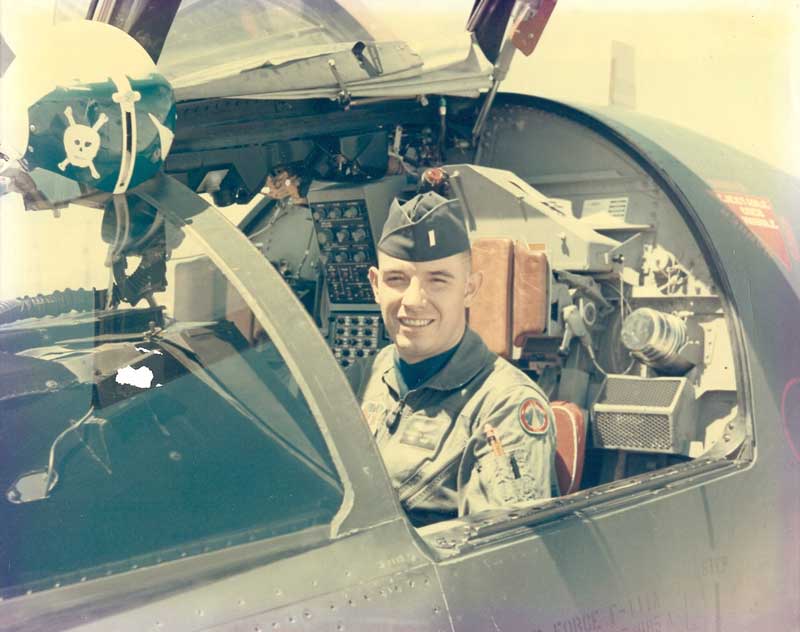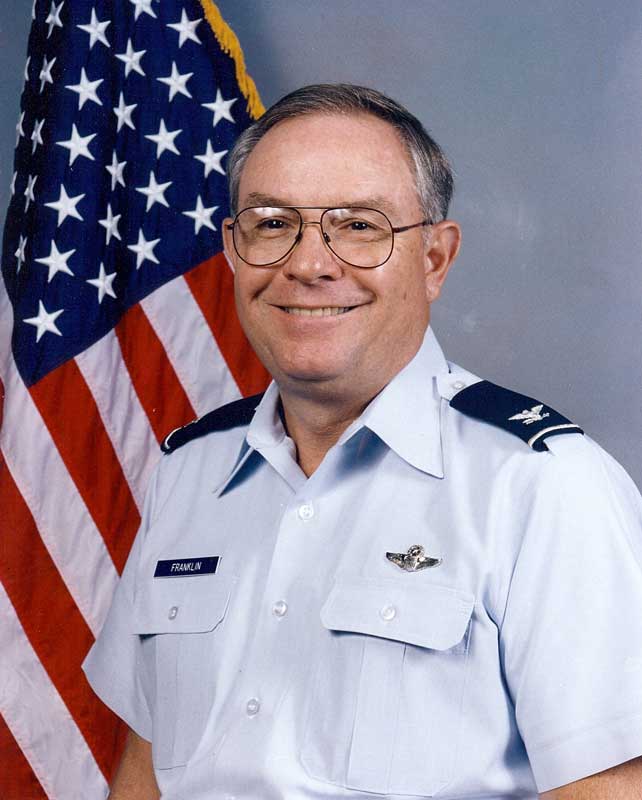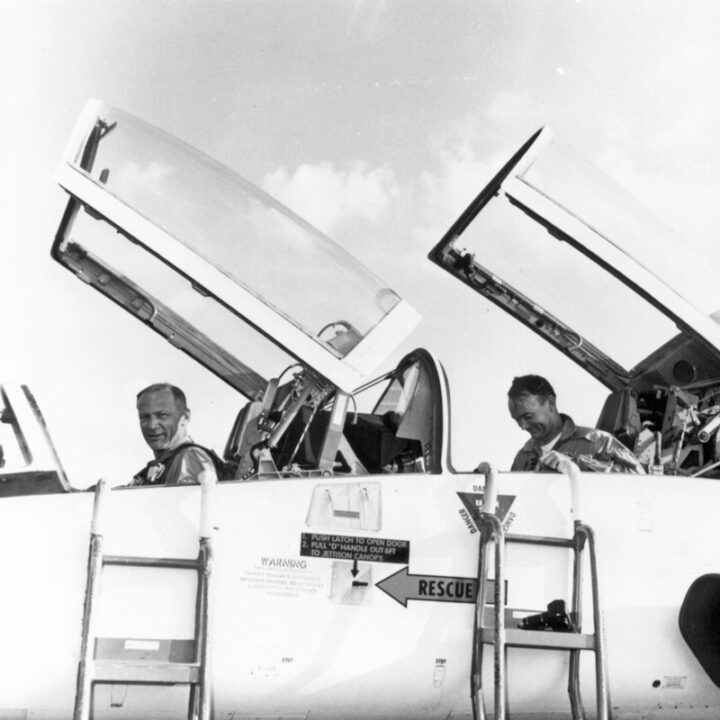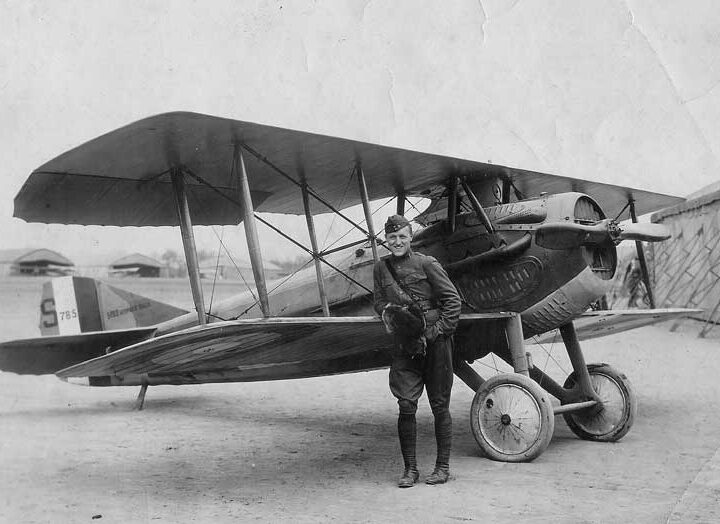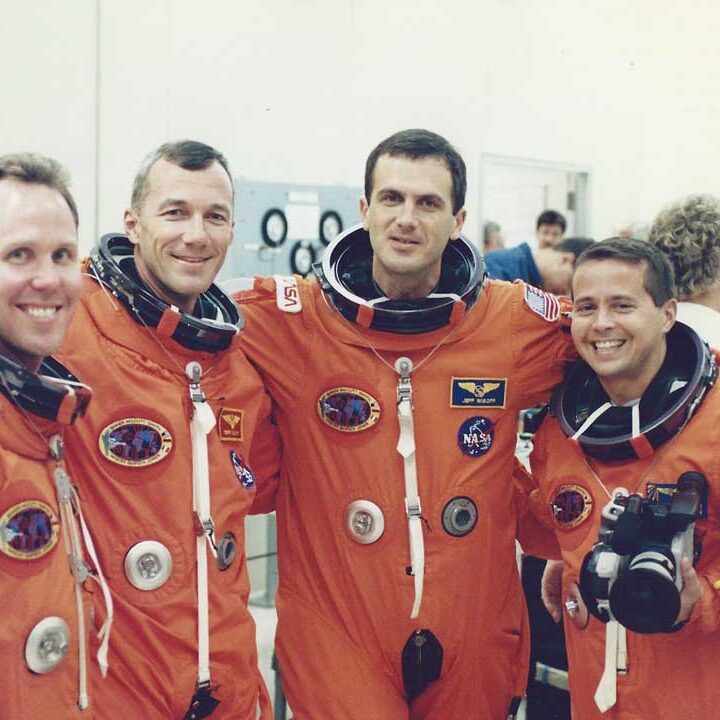Following graduation from Bowling Green High School (1962) and Western Kentucky University (1966), Colonel Arnie Franklin joined the United States Air Force. He attended Officer Training School, receiving his commission in February 1967. He completed undergraduate pilot training at Williams Air Force Base, Arizona and earned his silver wings in February 1968. His first operational assignment was with the 428th Tactical Fighter Squadron, Nellis Air Force Base, Nevada as an F-111A pilot.
Enroute to South East Asia, Colonel Franklin completed training in the OV-10 Bronco at Hurlburt Field, Florida and in 1971, was assigned to the 21st Tactical Air Support Squadron, Nakhom Phanom Royal Air Force Base, Republic of Thailand, performing duty as a Pave Nail Forward Air Controller and Instructor Pilot, logging over 700 combat hours. In early 1972, he returned to Nellis Air Force Base, and became recurrent in the F-111A. In September 1972 he was assigned to the 430th Tactical Fighter Squadron at Nellis, and deployed with the squadron to Takhli Royal Air Force Base, Republic of Thailand as an F-111A aircraft commander. Colonel Franklin returned to Nellis Air Force Base in September 1973, and was in the instructor pilot upgrade course when he departed to attend graduate school at the Air Force Institute of Technology (AFIT) at Wright-Patterson Air Force Base, Ohio.
Following his graduate studies in laser physics at AFIT, he was assigned to the Air Force Materials Lab at Wright-Patterson in December 1975. During this assignment, he served as an electro-optical engineer and assistant division chief of the Electromagnetic Materials Division.
In 1979 Colonel Franklin was selected to attend Air Command and Staff College (ACSC) at Maxwell Air Force Base, Alabama. Following graduation from ACSC, Colonel Franklin transferred to RAF Lakenheath, England, arriving in October 1980. During his six years at Lakenheath, Colonel Franklin performed duty as the chief of the wing’s aircrew Replacement Training Unit, operations officer of the 495th Tactical Fighter Squadron, and in December 1984 became the commander of the 493rd Tactical Fighter Squadron. While serving as the commander of the 493rd Colonel Franklin was selected to lead the USAF portion of Operation El Dorado Canyon, the US strike on Libya on 15 April, 1986.
Colonel Franklin returned to the United States in October 1986, and was assigned to Headquarters United States Air Force at the Pentagon as chief, Middle East, Africa, South Asia Division in the Directorate of Plans and Operations.
Following graduation from the National War College in July 1988, Colonel Franklin transferred to the 366th Tactical Fighter Wing, Mountain Home Air Force Base, Idaho as the director for operations. In October 1989 he became the vice commander of the 366th wing.
In September 1990 Colonel Franklin assumed command of the 27th Tactical Fighter Wing, Cannon Air Force Base, NM.
Following that tour of duty in July 1992, Colonel Franklin was assigned to the Air War College at Maxwell Air Force Base, Alabama as a professor of military studies and chief, leadership studies, and as deputy chairman, department of military studies. Colonel Franklin was assigned as the vice commander of Air University at Maxwell in July 1994, and retired from active duty in July 1996, completing almost 30 years of service.
Colonel Franklin is a command pilot with over 3,500 flying hours. He logged 782 combat hours in F-111s and OV-10s during his Southeast Asia tours of duty and while assigned to RAF Lakenheath, England. His military decorations and awards include the Legion of Merit with one oak leaf cluster, the Distinguished Flying Cross with one oak leaf cluster, the Meritorious Service Medal with one oak leaf cluster, and the Air Medal with 15 oak leaf clusters.

